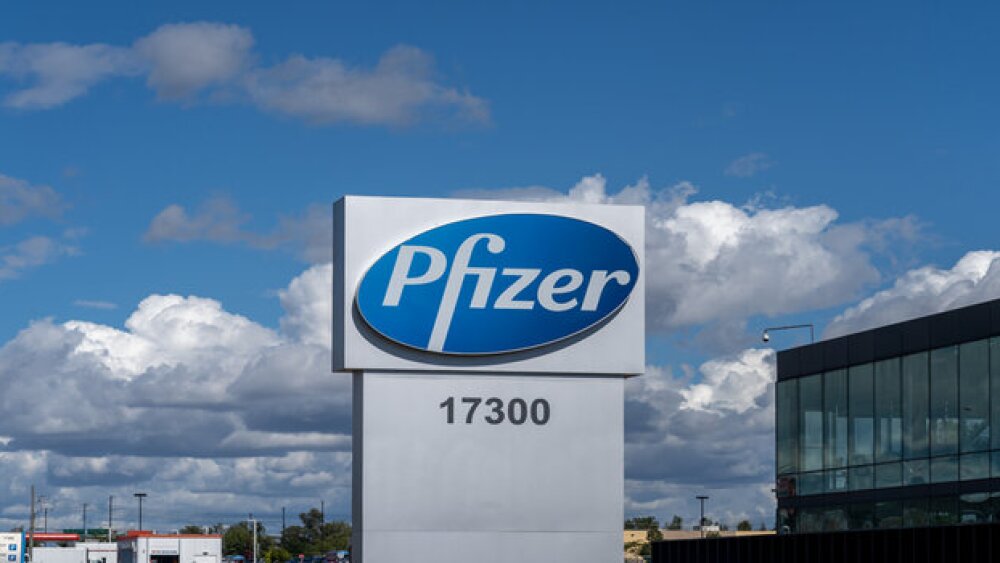Against steep odds and well-established paradigms, these four companies have successfully been commercializing their products on their own.
It takes 10 to 15 years for a drug to go through the clinic and if it survives that and reaches approval, the biggest test is still to come: the market. For many smaller biotechs, these stakes can make the prospect of commercializing their drugs on their own daunting, leading them to partner with a larger company in the drug development process. Indeed, most biotechs that try to go it alone fail, according to an April 2025 report from Evaluate.
“A stand-out drug for an unmet need is necessary, but not sufficient,” the report reads. Companies that want to commercialize products on their own have to build out a new market, set up diagnostic methods for their drug or challenge the existing treatment paradigm for their target disease—all of which require resources, time and effort that smaller companies may not have.
Previously, less-established players would try to strike commercialization deals with bigger companies to surmount these challenges, looking to benefit from their extensive sales networks, not to mention deep market expertise.
But, as Evaluate finds, times have changed for biotechs. Venture and private backing for small companies has improved, while scientific advancements, such as the advent of precision medicine and genomics, have created highly specialized disease niches, allowing smaller, more nimble companies to go toe-to-toe with their bigger competitors in the market.
Here, BioSpace reviews four of these plucky players, looking at how they’ve managed—or plan to manage—to thrive in a competitive market, often standing up to some of the most dominant and deep-pocketed pharma powerhouses.
Verona Stands Strong in COPD Against GSK, Sanofi, Regeneron
In June 2024, Verona Pharma’s Ohtuvayre won the FDA’s approval for chronic obstructive pulmonary disease (COPD), becoming the first new inhaled therapy to open up a new mechanism of action against the disease in more than two decades.
Ohtuvayre shares the COPD court with some of the industry’s hardest hitters. Sanofi and Regeneron’s Dupixent, for instance, was named the first biologic for COPD in September 2024, while GSK’s asthma blockbuster Nucala expanded into COPD in May this year. But Verona has stood its ground: In the four months that Ohtuvayre was on the market last year—after launching in August 2024—it brought in $42.3 million. Then, in the first quarter of this year, the Inhalable drug added $71.3 million to its earnings.
Citing data from the firm’s proprietary survey of 40 experts, Jefferies wrote in a May 22 note to investors that Ohtuvayre’s launch was so well-executed, it has a reasonable claim to having “the strongest COPD launch in history.” Looking at Ohtuvayre’s commercial execution, Jefferies’ respondents expect the drug to capture at least 20% of the market share and hit roughly $20 billion in peak sales.
Verona was well-positioned to pull off a powerful launch after raising some $1 billion in the months leading up to the drug’s approval—money that was earmarked for Ohtuvayre’s commercial activities. In January 2024, for instance, the company secured $400 million from Oxford Finance and Hercules Capital, followed by a potential $650 million infusion in May from Oaktree Capital Management and OMERS Life Sciences.
Arguably the strongest proof that Verona has done a commendable job at commercializing Ohtuvayre is that it has attracted the attention—and big bucks—of Big Pharma. Last month, Verona became the target of the second-largest acquisition deal of the year so far, garnering a $10 billion buyout from Merck.
Madrigal Maintains MASH Market Monopoly With Rezdiffra
Like Verona, Madrigal Therapeutics made biopharma industry history last year, winning the FDA’s first approval for MASH with its oral THR-beta agonist Rezdiffra in March.
Madrigal also chose to commercialize the drug on its own. The drug hit U.S. shelves in April 2024 and reached more than 11,800 patients by the end of that year for earnings of $180 million. The drug has sustained its strong market performance into this year: In Q1, over 17,000 patients had received Rezdiffra, with sales topping $137 million.
At the 43rd J.P. Morgan Healthcare Conference in January, Madrigal announced that it expects Rezdiffra to hit blockbuster status in the coming years.
Rezdiffra continues to monopolize the MASH market, which according to the Academy of Managed Care Pharmacy affects some 22 million adults in the U.S. Madrigal’s closest competitors include Akero, which is advancing the FGF21 analog efruxifermin, currently in three late-stage studies covering various stages of cirrhosis. The earliest of these three trials has a primary completion date next year.
With such a big market in front of it, and few competitive threats on the horizon, Rezdiffra could hit annual sales of over $3 billion by 2030, according to Evaluate’s December 2024 report on the MASH landscape.
Madrigal does have one notable challenger on its horizon, with GSK poised to enter the MASH arena in the next few years after it bought Boston Pharmaceuticals’ Phase III-ready efimosfermin alfa, an FGF21 analog that the pharma believes has best-in-class potential. In February, Lilly also partnered with South Korea’s OliX to developed an siRNA therapy for MASH, underscoring the value that Big Pharma sees in this indication.
BridgeBio Challenges Pfizer, Alnylam in ATTR-CM
For five years, Pfizer had the ATTR-cardiomyopathy market cornered with the transthyretin stabilizer tafamidis, marketed as Vyndaqel and Vyndamax, approved in 2019.
Then, in November 2024, BridgeBio broke into the market with Attruby, which similarly works by targeting and stabilizing transthyretin, a protein that is mutated in ATTR-cardiomyopathy, leading to organ damage in patients with the disease.
Going up against Pfizer is difficult enough, especially given how well-established the tafamidis portfolio already is. In 2024 the pharma reported $5.4 billion in sales for the tafamidis line. But a few months after Attruby’s approval, in March this year, Alnylam joined the fray with its RNAi silencer Amvuttra.
Despite stiff competition, BridgeBio appears to have carved out a hefty slice of the market for Attruby. Commercial data from before Amvuttra’s approval suggest strong execution. In its fourth-quarter earnings report, the biotech reported that Attruby had delivered 1,028 unique prescriptions from 516 prescribers as of Feb. 17. In a note days later, analysts at Mizuho Securities said that such uptake numbers indicate that Attruby’s launch is going well and put the product “handily north” of the 2025 consensus U.S. sales forecast of $86 million.
Investors likewise seem to find BridgeBio’s commercial performance satisfactory, sending the biotech’s stock up 68.73% since the start of the year.
Even with just a few weeks on the market, Attruby was able to make $2.9 million in net sales in 2024. In the first quarter of 2025, the drug’s first full commercial quarter, revenues hit $36.7 million. As of April 25, 2,072 unique patients had been treated. Alnylam’s Amvuttra also seems to be performing well, with IQVIA data noting an all-time weekly sales high of $33 million for July 5 through July 11, as per a July 28 note from BMO Capital Markets. In the same note, analysts wrote that they expect Q2 revenues for both Amvuttra and Attruby to comfortably outpace consensus expectations.
Awaiting Approval for Bronchiectasis, Insmed Prepares for Brensocatib Launch
Looking to follow in the footsteps of Verona, Madrigal and BridgeBio is Insmed, a New Jersey–based biotech working on the candidate brensocatib for bronchiectasis.
Designed to be taken orally, brensocatib has several competitive advantages. If approved, it would become the first therapy for bronchiectasis and open up a new mechanism of action: inhibiting DPP1, an enzyme involved in activating the inflammatory response in the lungs, for neutrophil-mediated diseases. According to Evaluate’s World Preview report published last month, brensocatib could reach peak sales of $3 billion in 2030.
Brensocatib is currently being reviewed by the FDA for the treatment of bronchiectasis. The application has been granted priority review and has a target decision date of August 12. Phase III data toplined in May 2024 showed that the drug lowered the annualized pulmonary exacerbation rate by roughly a fifth versus placebo. Brensocatib also significantly delayed time to first exacerbation.
In anticipation of an approval, Insmed has started preparing for brensocatib’s launch. Last month, the company put more than 7.8 million shares of its common stock up for sale, eyeing proceeds of roughly $750 million—money that it says will help support pre-launch and commercial activities for brensocatib, if approved. Alongside its first-quarter report in May, Insmed additionally revealed an ongoing project to establish a second manufacturing facility for brensocatib in the U.S.
Aside from bronchiectasis, Insmed is continuing to build out the clinical profile of brensocatib with trials in hidradenitis suppurativa and chronic rhinosinusitis without nasal polyps.






